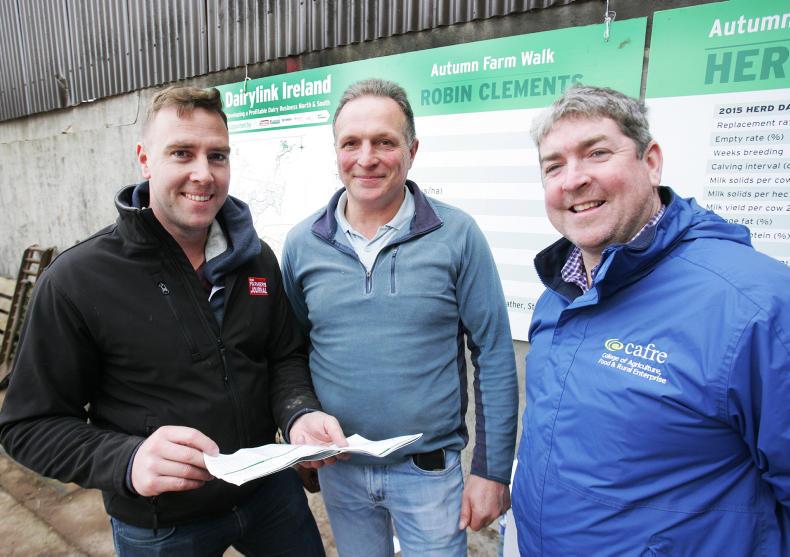Mortality rate is the ultimate test or indicator for herd health on any livestock farm. The best dairy farms are achieving 2% to 3% mortality for all stock on the farm. What these farms are doing in relation to animal health and herd management must be a good benchmark for all dairy farmers.
When discussing mortality with these top farmers, it is clear to see that the priority on the farm is prevention of disease breakdown and much more emphasis is placed on prevention than on last minute veterinary intervention.
These farmers will always react to information obtained from blood, dung or milk samples taken on the farm. If animals need a vaccination or a fluke treatment, it will generally be done regardless of the cost to the business, simply because the benefit will outweigh the potential loss.
Financial cost
Animal health is generally treated as a key aspect of the business simply because of the financial cost of underperforming stock, or the ultimate cost of dead stock to a farm business. These farmers also tend to work closely with their local vet and have an overall herd health plan designed for the farm.
From the outset, Dairylink Ireland has identified animal health as a key driver of farm profit.
Fit and healthy stock are central to an efficient production system and over the next few weeks I will be looking at project farms’ health plans and discussing some of the health issues project farms are experiencing.
The herd is 75% calved, with the remaining 25% due before Christmas. Our herd is most at risk of disease breakdown at and around calving. This is when cows are under most pressure, so the vaccination programme must be based around this. The herd starts calving in September and will be finished by the end of December. With a calving profile any more spread out than this, it can be difficult to implement an effective vaccination policy. I am actively trying to tighten the calving profile, making it more compact in an attempt to simplify the vaccination and herd health programme. When cows are at the same stage within the production cycle, it is much easier to get the vaccination plan correct; even the worming and fluke policy can be simplified with a compact calving profile.
A chart on the wall of the dairy highlights the timing of vaccine treatments for the farm for youngstock and milking cows. This keeps everyone updated on the timing of vaccines. At the start of the year, we will discuss and review the plan with our vet. We have another report which details all the products to be used each year. This gives us an idea of the cost of the vaccine, worming and fluke policy. In terms of worms and fluke treatments, we will treat cows in the dry period just as cows are dried off. This year, we used Zanil and Bimectin for fluke and worms. There is no history of calf scour on the farm, so I have not used Rotavec this year. Another key aspect to the health plan is a detailed breakdown of the calf-rearing programme. It keeps all members of the family aware of the issues and protocols for the calves. This includes colostrum management – getting four litres in before two hours from birth – and, from a Johne’s perspective, we try to get only the dam’s colostrum into heifer calves for the first four feeds.
Fertility update
Breeding is just around the corner for us, so bull selection is on the to-do list. We want to improve fertility in the herd. This year, the six-week in-calf rate was 66%. Under the Dairylink project, the target for this herd is 75% in the first six weeks. The pre-breeding work we are currently doing will feed into this and hopefully improve the proportion of the herd calved in the first six weeks, resulting in more replacements on the ground next year and a more compact calving profile.
Robin Clements uses National Milk Records (NMR’s) heat detection tool with all cow activity monitored through a neck collar. Three weeks before breeding, he identified cows not showing signs of heat. These cows will be checked over for non–cycling activity this week and treated accordingly. On the day of my visit, 14 cows had been identified with low or no heat recorded. This information is readily available on the farm and therefore must be utilised. Robin has some issues in terms of a shortage of neck collars for the herd, but even with the information he has on the proportion of the herd with collars, he could expect a 4% to 5% increase in his six week in-calf rate from simply focusing on those 14 cows three weeks pre-breeding.






 This is a subscriber-only article
This is a subscriber-only article










SHARING OPTIONS: